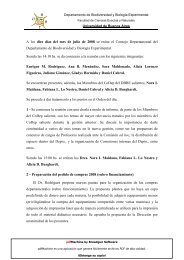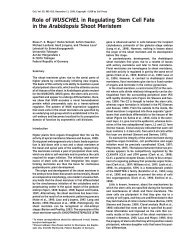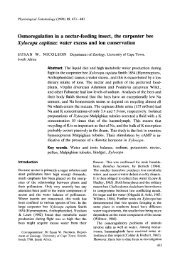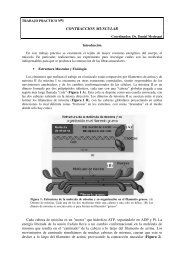The Aerobiology Pathway
The Aerobiology Pathway
The Aerobiology Pathway
You also want an ePaper? Increase the reach of your titles
YUMPU automatically turns print PDFs into web optimized ePapers that Google loves.
Spores produced from mouldy hay, shaken in a perforated drum in a wind tunnel (Fig.<br />
2.7) at wind speeds of 0.6–4.9 m s -1 were sampled periodically during one hour<br />
(Gregory and Lacey, M., 1963b). <strong>The</strong> number of spores released per minute decreased<br />
rapidly from the start with two-thirds removed in the first 3 minutes. <strong>The</strong> total number<br />
released was higher with faster wind speeds. 50 million spores were released after hay<br />
was blown for 31 min at 1.2 m s -1 , blowing for a further 31 min at 4.9 m s –1 released<br />
another 55 million spores.<br />
Figure 2.7<br />
Diagram of wind tunnel showing position of collecting apparatus for studying the spore content of stored products. A,<br />
Andersen sampler or position for cascade impactor or other sampling device, B, perforated zinc drum, C, paper honeycomb,<br />
D, motor for drum, E, fan, F, motor for fan, vac, line to vacuum pump. (Lacey, J., 1990, with permission from the<br />
McGraw-Hill Companies).<br />
Concentrations of up to 1600 million spores m -3 air were recorded in farm buildings<br />
while hay associated with Farmer’s Lung was being shaken for animal feed (Lacey, J. and<br />
Lacey, M., 1964). Actinomycete spores were 98% of the air spora, and as they range in<br />
size from 0.5-1.3 μm in diameter, they can penetrate deeply into the lungs (Fig. 2.5).<br />
5.2.4. Other aerobiological hazards in the work place and home<br />
In addition to Farmer’s Lung, there are many examples of occupational lung diseases<br />
caused by fungal and actinomycete spores (Crook and Swan, 2001; Hodgson and<br />
Flannigan, 2001). <strong>The</strong>rmoactinomyces sacchari was implicated in bagassosis (Lacey, J.,<br />
1971b) and Penicillium frequentens (Pl. 10.17) in suberosis (Ávila and Lacey, J., 1974).<br />
Further studies of the aerobiology of environments associated with occupational disease<br />
have allowed environments associated with occupational asthma and allergic alveolitis<br />
to be characterized (Lacey, J. and Crook, 1988; Lacey J. and Dutkiewicz, 1994; Crook<br />
and Swan, 2001).<br />
An early example of research into spore or dust hazards in the work place is that for<br />
threshers during harvesting and grain storage. In the early 1970s many farm workers<br />
suffered respiratory symptoms caused by dust during harvesting of grain. Air which was<br />
being inhaled by workers on combine harvesters was sampled on farms in Lincolnshire.<br />
28 THE AIR SPORA




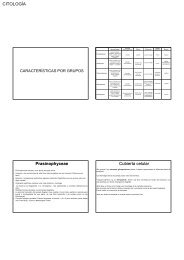


![Estructuras secretoras internas [4.64 MB]](https://img.yumpu.com/14294979/1/190x143/estructuras-secretoras-internas-464-mb.jpg?quality=85)
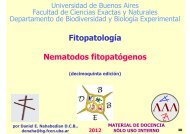
![anatomía y exomorfología [7.14 MB]](https://img.yumpu.com/12744163/1/190x143/anatomia-y-exomorfologia-714-mb.jpg?quality=85)
